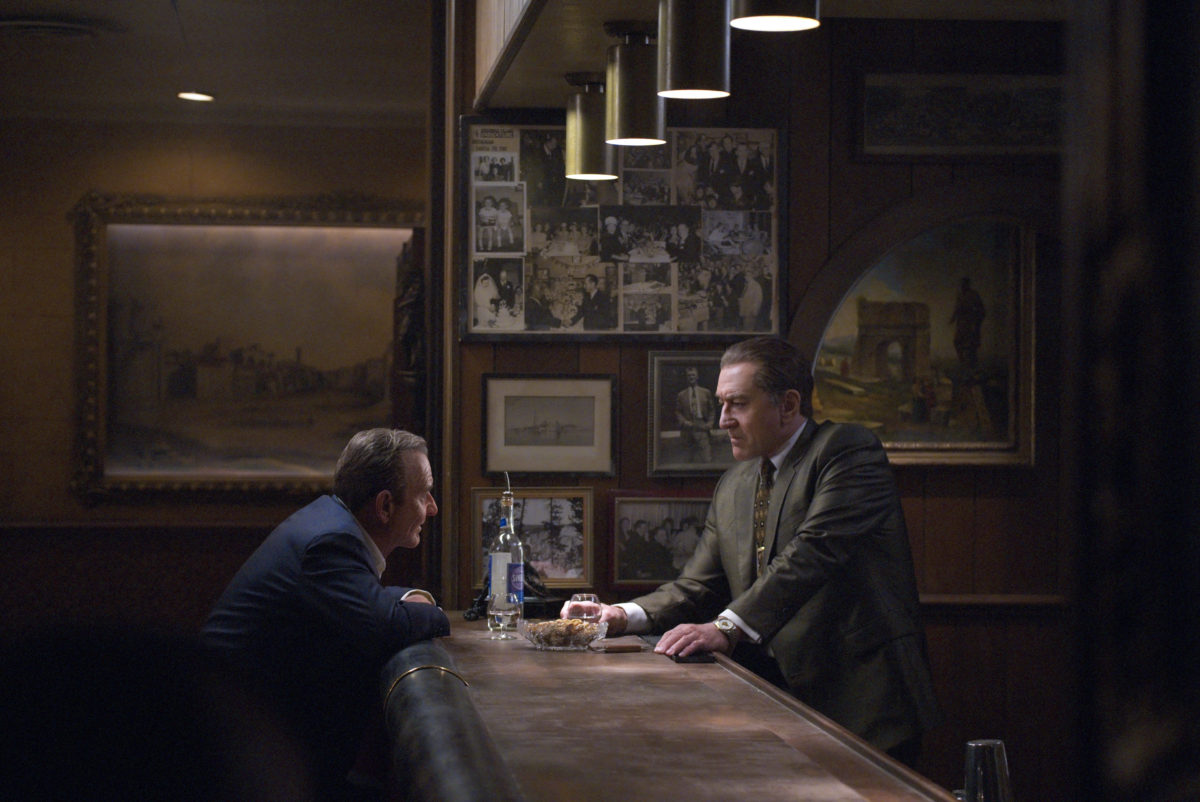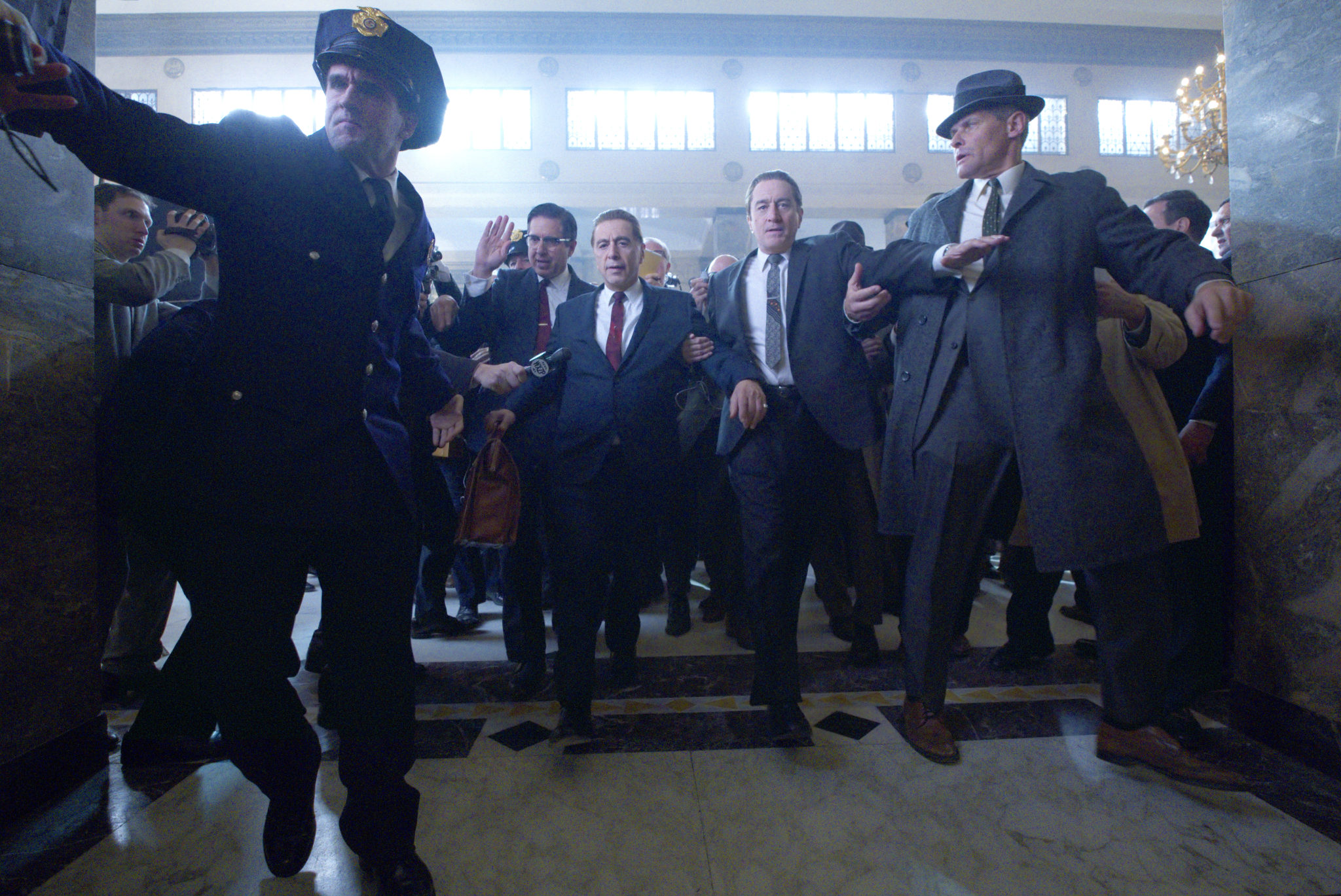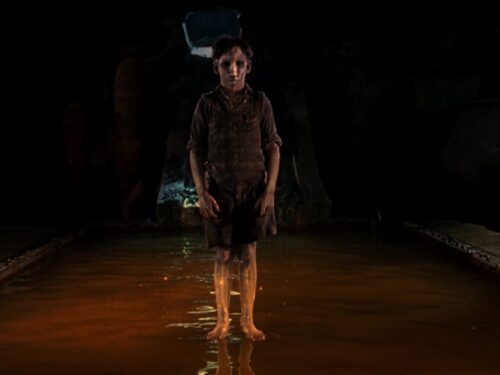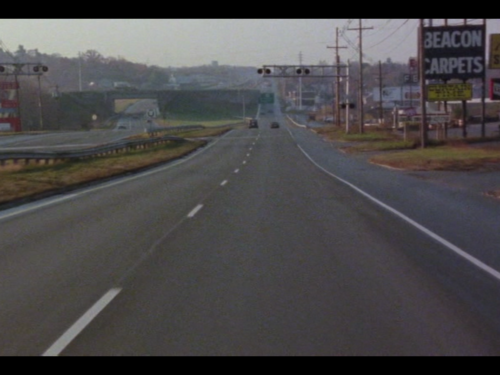Though it’s informed by decades of genre convention, The Irishman is not the apotheosis of the mob movie. It’s the antithesis — especially when juxtaposed against Goodfellas.
Long before anyone called Martin Scorsese’s cinematic preferences into question, some spent decades picking apart his preoccupations. Accusations that the director makes crime look cool have dogged him ever since Mean Streets (1973) scored the mob life to rock music. Even while The Rolling Stones have aged from provocateurs into peddlers of nostalgia, Scorsese has somehow retained the ability to both thrill and offend. It was just a few years ago that critics charged The Wolf of Wall Street’s three-hour bacchanal with celebrating all manner of bad behavior. Whether or not his films glorify the mob, Scorsese most definitely codified the life of cinematic mobsters more than twenty years before Wolf of Wall Street. Goodfellas remains his definitive mob movie (perhaps the definitive one) and, however reductively, the obvious choice for Scorsese’s definitive movie of any sort.
For most of its runtime, Goodfellas works even better as lifestyle porn than it does as a narrative film. That’s because we see most everything through the subjective, often-stoned eyes of caporegime-turned-federal-informant Henry Hill (Ray Liotta). Hill relates his story through a wistful voiceover that’s almost never interrupted. His first words — the ones about always wanting to be a gangster — are probably the most recognizable of Scorsese’s long career. Many (if not most) fans can’t recall the details of Goodfellas’ big jobs or describe the finer points of Hill’s downfall. I certainly can’t. We instead remember the razor-thin garlic, the colorful insults and the soundtrack packed with classic rock staples. We remember watching mobland life through the eyes of a teenaged Hill (Christoper Serrone), gliding from the backdoor of The Copacabana to a reserved table in a single, unbroken shot and — even while incarcerated — enjoying everything imaginable at the snap of a finger. There’s no denying that Goodfellas is a ton of fun. It’s as prominent on dorm room and pizzeria walls as it is on ‘Best Of’ lists for a reason. It also provides that anti-Scorsese crowd with perhaps its strongest argument. When Hill reminds them that he “loved the life” — “still love[s] it,” in fact — they assume Scorsese must feel the same.
Though its subject matter is similar and its perspective (at least) equally subjective, no one could reasonably accuse The Irishman of glamorizing anything, least of all organized crime. Henry Hill may have loved the life, but it’s arguable whether Frank Sheeran (Robert De Niro) ever enjoyed a moment of it. The Irishman won’t be Scorsese’s final film. It looks, however, like his final word on the subjects that have (again, however reductively) dominated the conversation around his work. It serves as an act of cinematic penance, an effort by Scorsese to remind everyone how he really feels about the violent men who’ve led his most famous films; it’s also a deliberate subversion of those films, a rejection of their tropes and a subtle attack on their least critical fans. Though it’s informed by decades of genre convention, it’s not the apotheosis of the mob movie. It’s the antithesis — especially when juxtaposed against Goodfellas.
By the time we meet him, The Irishman’s Frank Sheeran is at an age where his memories of mob life are beginning to fade. As far back as he can remember may not be very long at all. The film’s opening shot, tracking from a dark hallway through the sunlit halls of a nursing home, does more than offer an ironic callback to Goodfellas and the Copa. It does more than situate us within a world of imminent death, too. Moving from the shadows to the light of day, Rodrigo Prieto’s camera wrests Sheeran’s memories from the fog and forces him to reflect. The steady, plaintive refrain of “In the Still of the Night” begins to sound like an exhortation. It compels Sheeran to “remember,” “remember,” “remember.” His first words provide the film its second callback in as many minutes — yet another grim, ironic subversion of the standard established by Goodfellas. Like Hill, Sheeran recalls his youthful attitude toward wise guys. “When I was young,” he quips to himself, “I thought house painters painted houses. What did I know?” He was not an obsessive, but an outsider who made his way into organized crime without much planning or effort. Addressing the camera directly, Sheeran informs us that he was a Teamster, just “one of a thousand working stiffs” until he “wasn’t no more,” until the day he started “painting houses [him]self.”
After that condensed biography, Sheeran arrives at the subject that’s coaxed his memories out of the darkness. Insert shots introduce us to objects, details and moments — most provocatively, a shooting — whose significance will only become clear in time. “In this particular matter,” he continues, “the whole thing was built around the wedding.” He’s as casual with us as if we’ve spoken many times before, as if we’ve all been waiting to finally discuss “this particular matter.” He offers only scant details about Bill Bufalino (Ray Romano) and his soon-to-be-married daughter before describing the road trip that brought him to this wedding with Russell Bufalino (Joe Pesci) and their wives (Stephanie Kurtzuba and Kathrine Narducci) in tow. Whether or not we’ve inferred its significance, Sheeran explains the course the trip will take and provides a helpful visual metaphor for the movie we’re about to watch. He’s more Abe Simspson than Fat Tony at this point and acts the part by pulling out a map and tracing a red Sharpie line from the Philadelphia suburbs to Detroit. This trip — full of “business breaks” and cigarette stops — will bring viewers to the dark center of Sheeran’s memory: the moment he pulled the trigger and killed Jimmy Hoffa (Al Pacino). Conveniently enough, the trip brings Sheeran and Bufalino back to the gas station where they first met. The coincidence provides Sheeran an opportunity to flesh out that biography, undercutting audience expectations along the way.
The first 20 minutes of Sheeran’s criminal life play a bit like Goodfellas on fast forward. Scorsese introduces viewers to Philadelphia’s barrooms and their small-time characters, hoods like Skinny Razor (Bobby Canavale) who’s traded work in a butcher shop to make book. At the recommendation of friends, Sheeran begins stealing meat for “The Razor” and ingratiating himself to this man with “a lot of connections.” Though the songs and snappy editing are familiar, there’s something off about these sequences, particularly the ones set in Skinny Razor’s Friendly Lounge. They’re full of overlapping dialogue delivered in muffled voices, as if Scorsese has chosen to channel Altman rather than appease his own devotees. Sheeran’s voiceover, our guidepost throughout The Irishman’s 200-plus minutes, is conspicuously absent until after he’s gotten caught and gotten off scot-free. This early, he trusts us to follow along through every digression. It’s fitting that these moments — only fitfully remembered — would appear to us through a kind of fog. They suggest that Sheeran’s recollections are less and less clear the further they get from that fateful day in 1975.

Memories and their imperfections play an important role throughout these early sequences and all of The Irishman’s many flashbacks. Scorsese uses the bodies of Robert De Niro, Joe Pesci, Al Pacino and (to a lesser extent) Harvey Keitel to show how even our most vivid, formative memories are shaped and reshaped with time. There’s something off — a sort-of rubbery quality — to each actor’s “de-aged” face. What’s more, each man moves with a stiffness that betrays their advanced age. For De Niro especially, this prematurely-stilted quality adds new layers. Sheeran’s labored movements reveal the weight that memories and sins have taken on his body; they suggest, too, the labor necessary to bring those memories and sins back to the surface. Most importantly, they provide a helpful reminder that we’re not looking through a window into the past. Rather, we’re taking a trip inside the wildly subjective headspace of an abandoned, dying man — and an unreliable narrator at that.
Whatever Sheeran’s age, De Niro is titanically, wonderfully uncharismatic in the role. The tight-lipped, often stuttering, hitman calls to mind the actor’s shaky take on Robert Mueller more often than the effortlessly cool Jimmy Conway or the hotheaded Jake LaMotta. He finds good company among the Bufalino family and its associates. Save perhaps Skinny Razor, these are not the quippy, loud-mouthed mobsters of Goodfellas; they’re brutal, brooding men who operate in near-silence. No one is quieter than Russell Bufalino (Pesci). A character in JFK describes Pesci’s David Ferrie (who makes a brief appearance in the The Irishman) as looking “like a buzzard.” That description suits Bufalino, but not because he’s a scavenger picking at carrion. Bufalino instead looks like a vulture as described by Pesci’s most famous character, Tommy Devito. He rules the roost, looming ”like impending danger” and instilling fear without raising his voice. It’s a new role for Pesci, so accustomed to playing scrappy strivers, and he takes to it well. When Sheeran meets Bufalino for a second time, learns his name and becomes acquainted with “what was gonna turn out to be the rest of [his life],” we recognize the man’s unspoken menace and his coiled power.
While Pesci plays against type, Al Pacino only breaks from his usual mold in the sense that he fills it to bursting. His Jimmy Hoffa is everything fans of the actor’s post-Oscar career could’ve hoped for. He’s also an immediate outlier among the film’s muted mobsters. Even if he were a fictional creation, viewers would know almost instantly that he’s doomed. He’s all too willing to reveal the specifics of his plots and all too happy to acknowledge the mafia’s influence on august institutions. With thinly-veiled disdain for Italian Americans, he embraces the role of the outsider, commenting on the absurdity of the Mafia’s routine and wondering aloud which Tony is which. It’s no coincidence that The Irishman’s poster places Sheeran between Hoffa and Bufalino. Acting like a friend and a father respectively, they shape his life and come to define the story he relates. Their competing influences mold a man who spends decades keeping his mouth shut only to divulge every gory detail at the last possible moment.
In its final stretches, The Irishman stops referencing Goodfellas and becomes self-reflexive. Throughout incarceration and old age, Sheeran’s life becomes a series of ironic, melancholy episodes. His coevals, “all falling apart,” find themselves playing bocce far from the Bocce Club, sharing bread and “the good grape juice” in a prison cafeteria. Sheeran won’t get to grow old in the comfort of his own family, but he gets to see decrepitude among the family he preferred. Finally, Sheeran shares his thoughts on cremation, the same fate Hoffa (maybe) met all those decades ago. Rejecting the finality of fire and burial both, he opts for a spot in a crypt. This decision — and his choice of an Eagles green coffin — are among the only ones we ever see this unusually passive protagonist make. It’s an irony that’s only bested by the film’s final, most grim one. Only a director as old as Scorsese could make The Irishman and it’s good enough to make you wish he’d stick around much longer.
Follow Bennett and Split Tooth Media on Twitter
(Split Tooth may earn a commission from purchases made through affiliate links on our site.)




